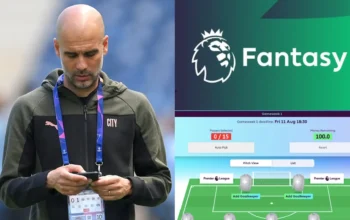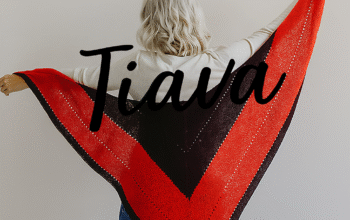Have you ever seen a flag without any label, color, or symbol and wondered what it stands for? This blank yet bold image often called the unlabeled flag has quietly become a symbol of neutrality, rebellion, and even unity. While traditional flags are filled with meaning and color, an unlabeled flag does the opposite: it strips everything away, leaving only the fabric of meaning itself.
In today’s world, where identity, expression, and belonging are constantly discussed, the unlabeled flag has captured attention for its simplicity and silence. But make no mistake that silence speaks volumes.
Understanding the Concept
At its core, an unlabeled flag is exactly what it sounds like a flag without any markings, colors, emblems, or words. It may appear white, black, gray, or completely blank. Yet despite its lack of visual identifiers, it carries weight.
Where It Came From
The idea first emerged in modern art and digital spaces. Artists began using blank flags to challenge ideas about nationalism, identity, and allegiance. Over time, online communities adopted the concept to express neutrality or protest without explicit statements.
Interpretations
An unlabeled flag can represent:
-
Neutrality: Refusal to take sides in a debate or movement.
-
Silence as protest: Choosing quiet resistance instead of confrontation.
-
Open interpretation: A symbol that invites personal meaning from the observer.
-
Minimalism: The belief that less can express more.
Quote: “A blank flag doesn’t mean nothing. It means everything is possible.” – Anonymous artist
Examples of Unlabeled Flags
-
Art Exhibitions: Minimalist artists often display blank or white flags as a critique of over-symbolism in politics and culture.
-
Digital Spaces: Online communities sometimes use unlabeled flag emojis or images to represent identity fluidity.
-
Protests: Some movements wave blank flags as a form of silent resistance — an act that says, we exist, even without labels.
The Symbolism Behind
Every flag tells a story. The unlabeled flag tells one too though it does so in whispers rather than shouts.
Neutrality and Identity
An unlabeled flag can symbolize neutrality. It’s a rejection of binary sides not out of indifference, but out of a desire for peace and understanding. In an age where polarization runs deep, a blank flag says, “I’m here, but I refuse to be boxed in.”
Protest Without Words
Sometimes the absence of a message is the loudest statement. Waving a blank flag in a protest can communicate exhaustion with politics, corruption, or endless division. It’s a way to say, “I dissent, but not within your system.”
Unity Through Simplicity
Without colors or labels, no group “owns” the flag. This makes it a universal symbol one that anyone can stand behind. It invites inclusivity and shared meaning rather than division.
Analogy: The unlabeled flag is like a mirror it reflects back whatever meaning people bring to it.
Became an Internet Phenomenon
The rise of the unlabeled flag didn’t happen overnight. It began as an artistic expression, but the internet turned it into a movement.
Memes and Virality
Platforms like Reddit and TikTok popularized blank flags as symbols of neutrality, irony, or self-awareness. Users shared versions of the flag as visual metaphors for refusing labels or rejecting identity politics.
Artistic Influence
Digital artists and designers embraced the concept, creating blank flag designs that question nationalism, branding, and identity. Many use it to express digital minimalism — a way of simplifying communication in a noisy online world.
Cultural Adoption
For younger generations, especially Gen Z, the unlabeled flag resonates deeply. It aligns with a desire for authenticity, fluid identity, and independence from rigid social categories.
Example: In 2023, several online art communities featured “blank flag” exhibitions exploring the theme of identity through absence. (MoMA hosts similar minimalist works that inspire such movements.
The Psychology
Why does something so simple evoke such strong emotions?
1. The Power of Minimalism
Humans naturally respond to clean, simple designs. The unlabeled flag taps into the minimalist mindset stripping away clutter to reveal deeper meaning.
2. Projection and Meaning
When faced with a blank image, people instinctively project their own feelings and beliefs onto it. That’s why one person might see peace, while another sees rebellion.
3. Emotional Resonance
The flag’s emptiness becomes a canvas for shared emotion. It represents both freedom and ambiguity, a rare balance that gives it enduring power.
Quote: “Meaning hides best in plain sight.”
Real World Examples
1. Art Installations
Artists like David Hammons and Yoko Ono have used blank or altered flags to challenge traditional symbols of power. These installations invite people to question what symbols truly represent.
2. Political Protests
During global demonstrations, blank flags have appeared as silent acts of defiance. They communicate frustration with politics and the desire for unity beyond party lines.
3. Branding and Design
Modern brands are embracing “unlabeled” aesthetics — plain packaging, minimal logos, and neutral colors. The unlabeled flag reflects this larger cultural shift toward authentic simplicity.
Controversy and Debate
Despite its popularity, the unlabeled flag has critics.
Critics’ Perspective
Some argue it represents apathy, not activism. To them, a blank flag means standing for nothing — a way to avoid tough choices or political accountability.
Supporters’ View
Supporters counter that it represents freedom from forced categorization. By rejecting labels, it invites inclusivity rather than exclusion. It’s a protest against the need to fit into predefined boxes.
Media and Cultural Commentary
Writers and journalists have discussed the flag’s rise as part of a larger movement toward identity deconstruction — a cultural moment that values personal definition over collective labeling.
What the Unlabeled Flag Says About Modern Identity
The unlabeled flag mirrors today’s shifting sense of self. Many people no longer see identity as fixed or binary — instead, it’s fluid and evolving.
1. Fluid Identities
In a world that values authenticity, people resist being defined by one role, nation, or group. The unlabeled flag becomes a symbol of personal freedom.
2. Breaking from Categories
It challenges the very idea that every belief needs a flag or label. Some things can simply be.
3. The Digital Dimension
Online, where identities blur, the unlabeled flag has become a digital shorthand for self-expression without limits.
How to Create or Display Your Own Unlabeled Flag
Want to make or use one? Here’s how:
Design Tips
-
Keep it blank or single colored (white, black, or gray).
-
Avoid symbols, logos, or text.
-
Choose high quality fabric or digital material to emphasize purity of form.
Ways to Display
-
In an art piece or personal project
-
As a digital avatar or social media banner
-
During peaceful demonstrations or gatherings promoting unity
Ethical Considerations
Always respect others’ interpretations. The unlabeled flag belongs to everyone, so keep its use inclusive and thoughtful.
Conclusion
The unlabeled flag isn’t about emptiness. It’s about possibility. It reminds us that sometimes silence, simplicity, or blankness can speak louder than a thousand colors or slogans.
In a world crowded with noise, symbols, and division, the unlabeled flag stands out by saying:
“You don’t need to be labeled to be seen.”
FAQ
Q: What is an unlabeled flag?
An unlabeled flag is a blank flag without markings or colors, often used to represent neutrality or freedom from labels.
Q: What does it symbolize?
It can mean neutrality, protest, inclusivity, or a rejection of identity labels.
Q: Why is it popular online?
Because it resonates with modern ideas of minimalism and self definition.
Q: Can anyone use it?
Yes. Its power lies in open interpretation anyone can make it their own.



